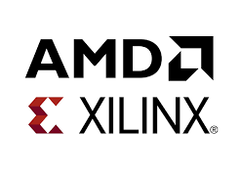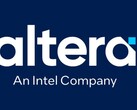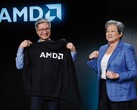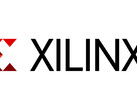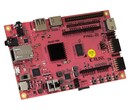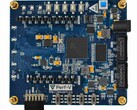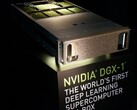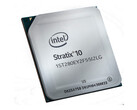AMD’s market shares for the desktop, laptop and data center sectors have been steadily increasing in the past few years. With the latest announcement of the Zen 3 CPUs, AMD could reach 50% desktop market share by 2022, and the situation is not looking good at all for Intel if it keeps postponing its more powerful solutions. To add more insult to injury, AMD now plans to acquire Xilinx, which would enable team red to start gnawing at Intel’s market share in the telecommunications and defense markets.
According to Wall Street Journal, AMD and Xilinx are in advanced talks and the deal could be officialized as soon as next week, but there are also insiders that claim the deal is not guaranteed to be finalized, as the talks had stalled for some time before recently restarting. If the deal is indeed accepted by both sides, AMD is most likely going to use its stock as currency, valuing Xilinx at around $30 billion.
Xilinx is among the largest FPGA (field-programmable gate arrays) producers in the world. Another big FPGA maker - Altera Corp. - was already acquired by Intel in 2015. Unlike regular processors, FPGAs can be reprogrammed to perform different tasks that were not included in the initial design, making them valuable in rapid prototyping and fast-emerging technologies that cannot afford to waste an entire year of R&D for improved chips. Xilinx’s FPGAs can be found in wireless communication devices (5G infrastructure), data centers, and advanced aerospace / automotive systems including radars.
Even though Xilinx has recorded decent growth this year, its shares have been hurt by the U.S.-Chinese trade wars, especially the Huawei bans in the U.S. Analysts cited by The Wall Street Journal claim that Huawei accounted for 6-8% of Xilinx’s revenue. A merger with AMD could be beneficial for Xilinx, but AMD needs to be careful not to spread thin across too many markets, otherwise this deal may prove as problematic as the ATi merger from 14 years ago. Interestingly enough, Xilinx’s CEO Victor Peng has previously worked for AMD’s ATI division.
Market analyst Retired Engineer on Twitter believes that this merger would allow AMD to produce technologies similar to Intel’s Scalar / Vector / Matrix / Spatial XPUs, or Nvidia’s Accelerated Computing and DPUs, in addition to expanding team red’s portfolio with AI acceleration, Edge processing, video streaming / real time transcoding, and IoT / AIoT tech. Meanwhile, Xilinx's stocks are up 17% following the news of the possible merger.


